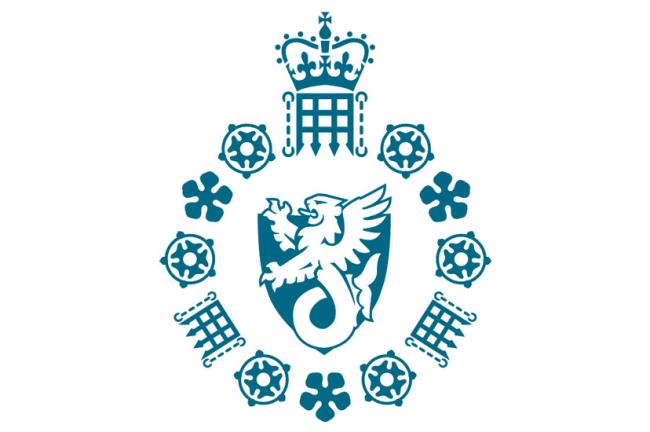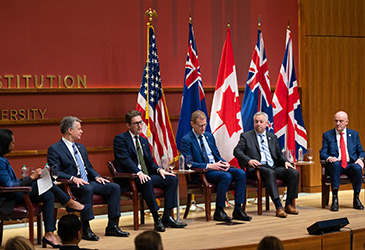The rise of the Islamist terrorist threat
Introduction
By Professor Christopher Andrew, author of "The Defence of the Realm".
For most of the 1990s the Service believed that the main terrorist threat to Britain, apart from the Provisional IRA, came from Middle Eastern state-sponsored terrorism, and particularly from operations by the Iranian Ministry of Intelligence and Security (MOIS), whose chief targets included the British writer Salman Rushdie.
While continuing to warn of the threat from MOIS, the Service told police Special Branches in December 1995 that: ‘Suggestions in the press of a world-wide Islamic extremist network poised to launch terrorist attacks against the West are greatly exaggerated.’
Usama bin Laden and Al Qaida
The Security Service Annual Report for 1997–8, completed in July 1998, was the first to mention Usama bin Laden by name and reported ‘important collaboration with the Americans’ against him. Soon afterwards, on 7 August 1998, Al Qaida carried out its first major terrorist attack. Huge bombs in trucks driven by suicide bombers almost demolished the US embassy in Nairobi, Kenya and badly damaged the embassy in Dar es Salaam, Tanzania. The Service’s Annual Report for 1998–9 put its role in the disruption of a similar planned attack on the US embassy in Tirana, Albania, at the top of its ‘successes against international terrorism’, but warned of worse to come.
In July 2000 a Security Service operation, codenamed LARGE, uncovered the first Islamist bomb factory to be detected in Britain. Three months later, a year before 9/11, thanks to its counter-proliferation operations, the Security Service – without realizing it at the time – succeeded in disrupting an attempt by Al Qaida to obtain pathogens in Britain for use in developing biological weapons.
Like all other Western security and intelligence agencies, the Security Service had no prior warning of the 9/11 attacks on New York and Washington. From the early summer of 2001 onwards the Security Service received mounting intelligence which pointed to a major Al Qaida attack on US targets but gave no indication either that the attack would take place in the United States or that it would involve hijacked aircraft.
The terrorist attacks of 11 September 2001 and the threat of further attacks brought the Security Service more firmly to centre stage in Whitehall than ever before. Reflecting on the period since the end of the Cold War before his retirement in October 2002, Director General Stephen Lander noted a major ‘change in the relationship between the Service and the rest of Government’:
"During the Cold War the day to day work of the Service did not engage ministerial attention at all since it concerned the intricacies of security (vetting, visas etc) in the context of a well understood strategic threat. Today with over 60% of our work on terrorism, what we do and what we find out can be of direct relevance to Ministers’ day to day concerns..."
The priority given by government to counter-terrorism was reflected in increased funding which enabled MI5 staff numbers to grow from about 2,000 on 9/11 to about 3,600 in 2010-11, with a target of 3,800.
The first major Islamist conspiracy to bomb targets in the UK after 9/11 was uncovered as a result of Operation CREVICE, which began in the spring of 2003 with the investigation of a group based in London and Luton which was later discovered to be planning attacks designed to cause mass casualties in nightclubs, pubs and shopping centres. CREVICE became the largest counter-terrorist operation yet undertaken by either the Security Service or the police. All the key suspects were arrested at the end of March 2004 before they were ready to begin their bombing campaign.
The heightened threat from Al Qaida prompted two major changes in counter-terrorism. For the first time since World War II, the Security Service set up regional offices closer to the regional centres of extremist activity and better able to improve collaboration with local police forces. Changes in intelligence assessment were equally radical. In June 2003 the Joint Terrorism Analysis Centre (JTAC) was set up in MI5’s HQ, Thames House, as ‘the UK’s national centre for the assessment of international terrorism’, with representatives of around a dozen government departments and agencies concerned with various aspects of counterterrorism.
Operation RHYME in 2004 pre-empted an even more dangerous terrorist attack than Operation CREVICE. The chief plotter was a British Hindu convert to Islam, Dhiren Barot, who, the Service believed, had been personally selected by Khalid Sheikh Mohammed, the chief Al Qaida planner of 9/11. As well as planning attacks on underground car parks and tube trains, Barot’s ultimate ambition was to explode a radioactive ‘dirty bomb’, though he acknowledged that ‘for the time being we do not have the contacts that would allow us to purchase such items’.
Dame Eliza Manningham-Buller (DG from 2002 to 2007) warned in the summer of 2004: ‘There are worrying developments in the radicalisation of some young British Muslims. ...It can only be a matter of time before something on a serious scale occurs in the UK.’ A year later, on 7 July 2005 (7/7), the first successful attacks by Islamist suicide bombers in the UK killed 52 people on three underground trains and a London bus. Manningham-Buller told MI5 staff next day: ‘We were shocked by the horror but, while we had no intelligence that could have prevented it, not surprised.’
In the summer of 2006, Operation OVERT – the largest surveillance operation in the history of MI5 and the Metropolitan Police – disrupted what the Security Service assessed as potentially the most dangerous terrorist conspiracy in British history: an Al Qaeda plan to place suicide bombers on board seven flights leaving Heathrow for North American cities during a three-hour period. The plotters were later convicted of terrorist and other offences.
Protective security was an increasingly important complement to counter-terrorist operations. In 2007 the interdepartmental Centre for the Protection of National Infrastructure (CPNI) was established, bringing together resources and expertise from a number of government departments and agencies. In 2023, CPNI became the National Protective Security Authority with an expanded remit. Also in 2007, MI5 was for the first time given the lead intelligence responsibility for national security in Northern Ireland.

